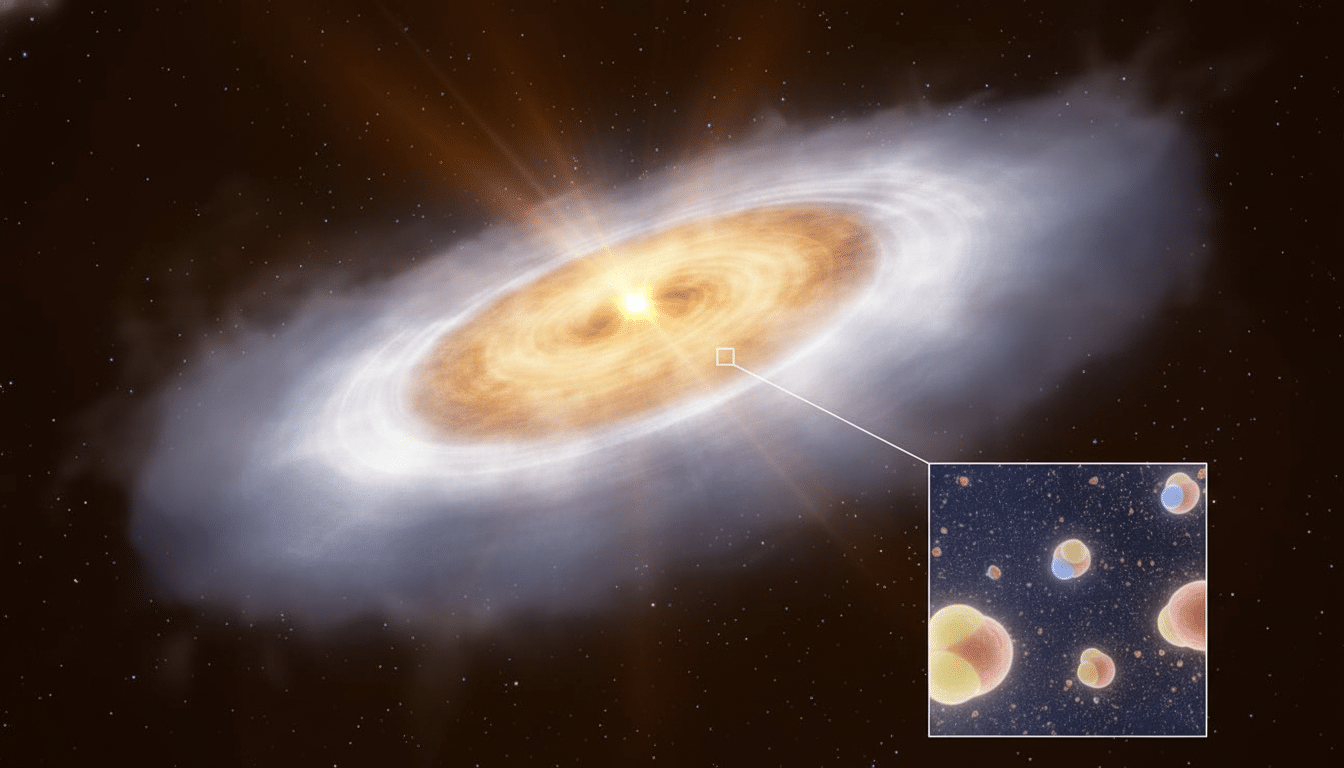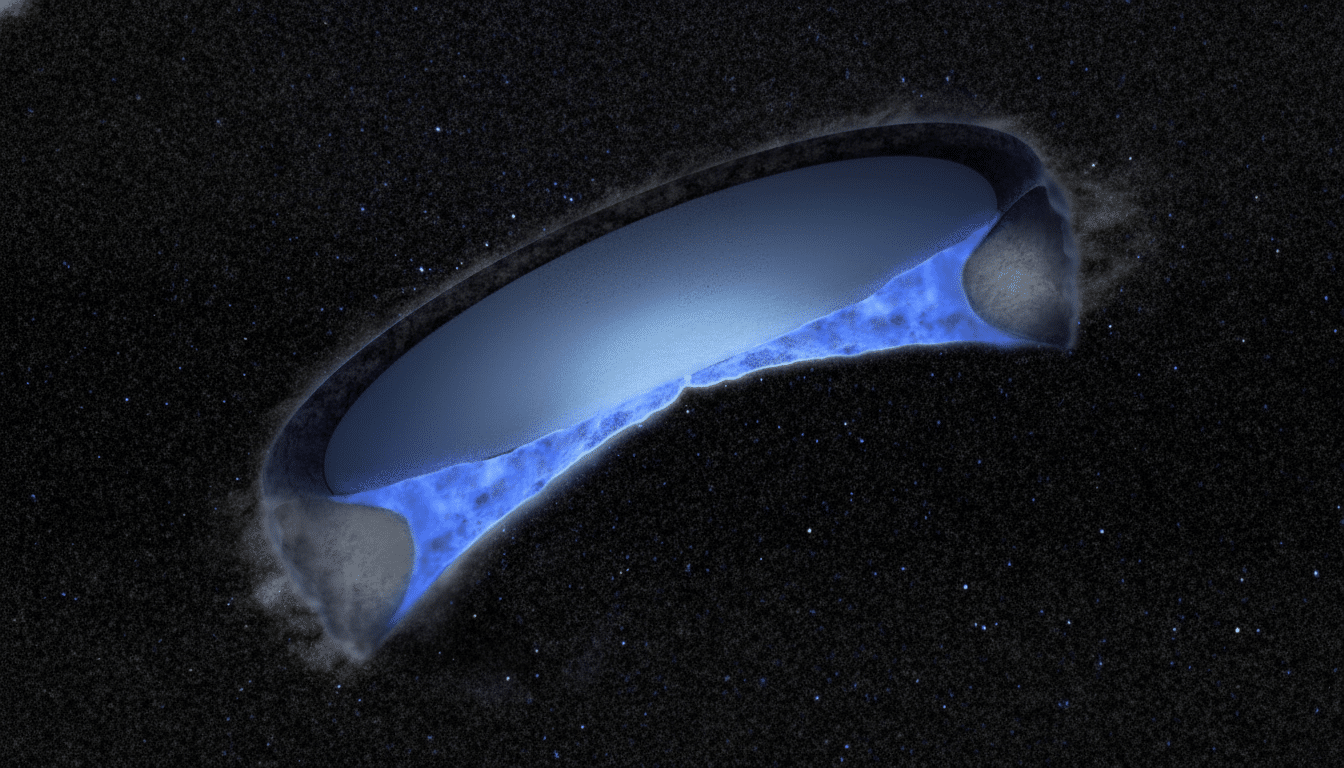New measurements from a high-powered Chilean radio telescope suggest that the bulk of the water flowing through Earth’s oceans was born long before the Sun sparked to life.
The discovery bolsters a long-held notion in planetary science: Water can weather the entire trip from supercool interstellar clouds into the disks that ultimately construct planets, arriving nearly unchanged.

Astronomers using the Atacama Large Millimeter/submillimeter Array (ALMA) have spotted a very rare “heavy” version of water in one of the planet-forming disks that are supposedly held around stars (like V883 Orionis, a young star around 1,300 light-years away).
The chemical fingerprint they measured offers the first direct proof that water ice can be transferred to protoplanetary disks from the interstellar medium with its pristine contents in tow — and suggests that Earth’s H2O comes from pre-Solar System residues of icy compounds forged in a time before there was life on our planet.
What Astronomers Found in the V883 Orionis Disk Study
The research team chose to target doubly deuterated water, or D2O, which has two atoms of deuterium, a heavier isotope of hydrogen. This molecule is the most extraordinarily sensitive probe of where water formed and how. The 66-antenna array of ALMA detected the faint millimeter-wave signatures of D2O in V883 Orionis’ disk, and found its levels both with respect to regular water and to singly deuterated water (HDO).
What’s more, V883 Orionis is at present in a rare and bright outburst period. The brighter luminosity heats the disk enough to evaporate ice and expose the chemical ratios that would otherwise be locked away in ices or frozen grains. The detected quantities of D2O are much too high to be the result of water produced in situ in the disk. Instead, they fit the “fingerprints” observed in material formed much earlier in the star birth process when temperatures are only a few tens of degrees from absolute zero inside interstellar clouds.
Why Deuterium Is a Smoking Gun for Ancient Water
Deuterated enrichment is a cold-chemistry process. Reactions with deuterium proceed more easily than those of normal hydrogen at very low temperatures, which enhances the D/H ratios in icy molecules. When that enriched ice coats dust grains, its own isotopic signature is a persistent ledger of where it first formed. If the water were destroyed and damaged later at hotter disk temperatures, D2O levels would drop.
Comparisons sharpen the picture. The D/H ratio of water in Earth’s oceans is about 1.56 × 10−4. Comets, comet 103P/Hartley 2 for example, fall in between these values with a value close to that of Earth; and others (e.g., comet 67P/Churyumov–Gerasimenko visited by the Rosetta spacecraft) are approaching three times the value of Earth. Meteorites from those and carbonaceous chondrites (which lie close to Earth) have large amounts of hydrated minerals. The D2O and HDO abundances in V883 Ori fall solidly into the regime of cold interstellar chemistry, not in-disk remelting.
A Link From Prestellar Clouds To The Oceans
The new detection, described in Nature Astronomy by a collaboration that included the University of Milan and the National Radio Astronomy Observatory, filled a longstanding hole in the “water delivery” story.

Previous work has demonstrated that young protostars and comets have deuterium-rich water in common. Absent was the sort of direct, unambiguous bridge across a crucial junction — from a chilly molecular cloud into the warm, planet-forming disk around it. V883 Orionis provides that bridge.
The implication is profound: a large portion of the water that ended up on Earth was created as ice in space before the Sun itself existed.
That water probably latched onto the early solar system inside of dust and primitive bodies — asteroids and comets that later smacked into Earth as it formed. This perspective is consistent with data from meteorites and recent sample-return missions, like NASA’s OSIRIS-REx and Japan’s Hayabusa2, which returned ancient water-rich materials on asteroids.
Implications For Life And Planet Formation
If water is a regular inheritance, it should be common in the younger solar systems throughout the galaxy. That ratchets up the baseline for habitability: planets built from water-rich chunks begin their days with oceans, and potential biospheres, already in progress. It also may help make sense of why water is such a dogged carrier of the ingredients of life. Although complex organics can be modified by heating and radiation, isotopic evidence suggests that water commonly persists.
The find is in addition to recent observations made with the James Webb Space Telescope, which has observed water vapor closer in to where young stars and rocky planets are located. ALMA and Webb together can track water from the cold, outer reaches of disks to their warm interiors, charting a conveyor belt that may carry ice and vapor to up-and-coming worlds.
What Comes Next in the Search for Ancient Water
Scientists will widen their search for D2O to other disks and at different stages of evolution. Wider samples will determine how common this inheritance is, and how frequently outbursts of the sort witnessed in V883 Orionis reveal chemistries that would remain hidden otherwise. Instruments like ALMA or the NOEMA Observatory and their future expansions will improve isotopic maps and link them to the disk kinetics.
For now, the message is refreshingly straightforward: The water in our cups has played a role in a story that began inside of a cold, dark cloud long before the Sun turned on. Reading this isotopic script written into ice that is thousands of years old, astronomers are discovering how far back in time our oceans’ memory reaches.

